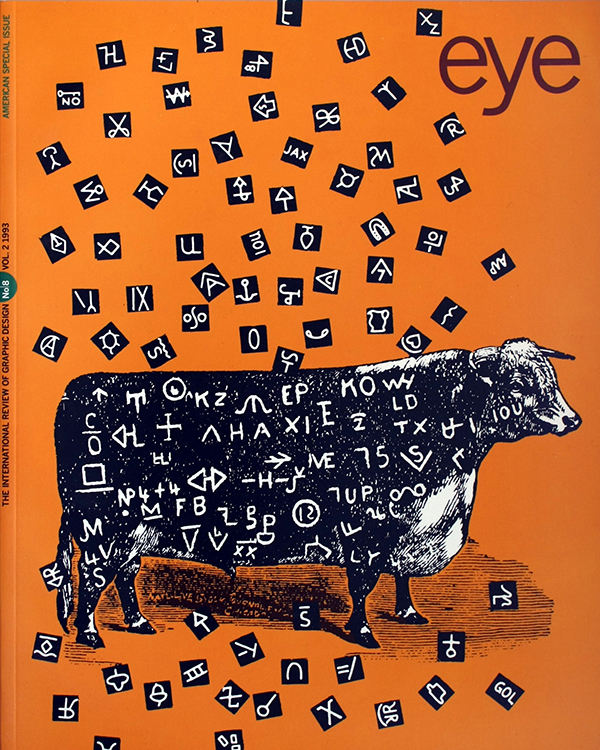Autumn 1992
Editorial Eye 08
This special issue of Eye examines how American graphic design has changed in recent years and how it looks set to evolve in the future. It is a subject of crucial interest for two reasons. First, and most obvious, because the country’s rich tradition continues to throw up some of the most challenging design anywhere in the world. More fundamentally, because in America the issues that affect, or will soon affect, graphic design everywhere are magnified and sharper, the lines of debate more clearly drawn, the positions more forcefully and articulately held. As our guest editor, historian and critic Steven Heller, shows in his introduction overleaf, American graphic design is divided. There is an old guard and a news guard and the gulf between the two has grown wide. Designers such as Paul Rand and Massimo Vignelli have condemned the work of younger designers in the most damning of terms and the response has been equally loud. There is bitterness on both sides, but this should not lead us to dismiss the argument as a matter of personality. This is not a debate simply about subjective taste; it is a debate about ideology and, ultimately, the purposes of graphic communication. At its centre stands the monolithic spectre of Modernism, a cultural force within American graphic design to a degree that it is perhaps hard for British designers (though not continental Europeans) to understand. From the typographic experiments of Emigre magazine to the feminist design of Sheila Levrant de Bretteville at Yale (see page 10), and the Deconstructivist graphics of Cranbrook Academy of Art, Modernism’s most cherished assumptions are under attack. At the same time, new critical strategies suggest alternative readings of classic Modernist designs that were once celebrated for their formal qualities alone. In Europe, the study of graphic design is less developed – certainly less widely disseminated and read – and American design writing offers a valuable example of how a more analytical approach to the discipline might be applied. American graphic design remains, on the evidence here, one of the most vigorous and inventive design cultures in the world.
Rick Poynor, Eye editor, nos 1-24, 1990-97
First published in Eye no. 8 vol. 2, 1993.
Eye is the world’s most beautiful and collectable graphic design journal, published for professional designers, students and anyone interested in critical, informed writing about graphic design and visual culture. It is available from all good design bookshops and online at the Eye shop, where you can buy subscriptions and single issues.

